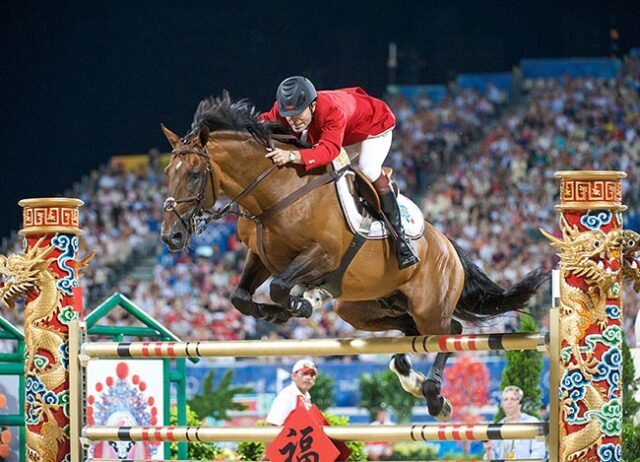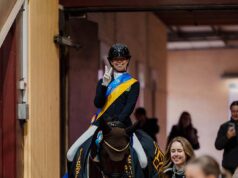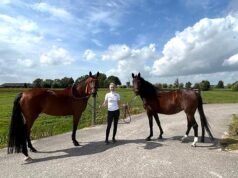
By Claartje van Andel and Adriana van Tilburg
Photography: Peter Llewellyn, and FEI
In recent months, the breeding world has lost three legendary names in sport horse breeding – Jazz, Kannan, and Don Schufro (whose profile will be published in our March issue), while Indoctro is also celebrated in this article as ‘alive but definitively retired’ at the age of 30.
Jazz will be remembered as the ultimate specializer. Also known under his competitive name of Broere Jazz (Cocktail x Ulster, bred by the late Huub van Helvoirt), Jass is currently ranked as the number one dressage sire by the WBHFSH, while his son, Johnson, is ranked two. Jazz passed away at the age of 29.
“He is a one in a million horse,” said Nico Witte when he bought Jazz as a foal. He especially liked the long lines, attitude, and movement mechanics of the foal. However, preferent stallion was both praised and reviled. Still one thing is for sure: no one stallion has ever had so much influence in breeding in the Netherlands – and perhaps even beyond – like Jazz.
From the legendary breeding of the late Huub and Tiny van Helvoirt from Rosmalen, the cheeky colt was first given the name Jacob, after the well-known Dutch journalist and photographer Jacob Melissen.
When Jazz did his performance test in 1994, it was before the days of specialized horse breeding. Jazz was recorded with unsatisfactory marks in jumping, yet current dressage horse breeding is virtually unimaginable without Jazz. “He stood out because of his amazing forehand, high legs, withers, and his mighty hind leg. And of course he had an amazing trot. The fact that he had Cocktail as his sire, was a plus,” said Jaap Werners, who in time was responsible for awarding Jazz with his breeding license. “In the terminology of those days, Jazz wasn’t a true sire,” Werners recalls. “He was narrow and barely met the qualifications for a breeding stallion in the old-fashioned philosophy. But he had so much charisma, ‘presence’ as they say in England. You didn’t forget him.”
A show dancer
The sensitive stallion with presence from the start had lovers but also knew his opponents. Jazz would be a nice horse for ‘on the rope’, but the big sport certainly wouldn’t be reachable. However, Olympic dressage rider Tineke Bartels believed quite the opposite. She was asked whether she would be interested in training Jazz, and she was, remembering; “Nowadays we don’t find it any problem if an amazing horse is spooky at times, like for instance Adelinde Cornelissen’s Jazz son Parzival was, too. But when I started to train Jazz, it took many talks and shows to earn some understanding about this fact, In those days people weren’t used to the positive side of a sensitive horse, so a lot of the publicity was rather negative. That was when I started focusing on our ballet show, a dance troupe combined with a torch show. It was so easy to combine the elegance of human dancers with the elegance of Jazz moving in passage.” Bartels went on to say; “It proved that there isn’t an ounce of evil in Jazz. He simply was an amazing animal.”
Jazz was also exceptional for having a syndicate organized to keep him in Dutch hands. Cees Broere bought two shares in the syndicate, which is why he was called Broere Jazz from then on. Later, Broere bought Jazz, which was a great opportunity for his stable-rider Kirsten Beckers, as learned everything from ‘master’ Broere Jazz, whom she nicknamed her ‘Superjazzie’... To read the complete article you need to be a subscriber
CLICK HERE TO SUBSCRIBE TO BREEDING NEWS
SUBSCRIBERS CAN READ THE COMPLETE ARTICLE BY LOGGING IN AND RETURNING TO THIS PAGE



